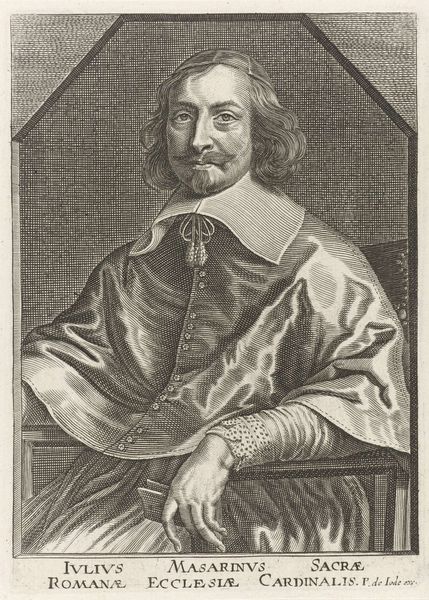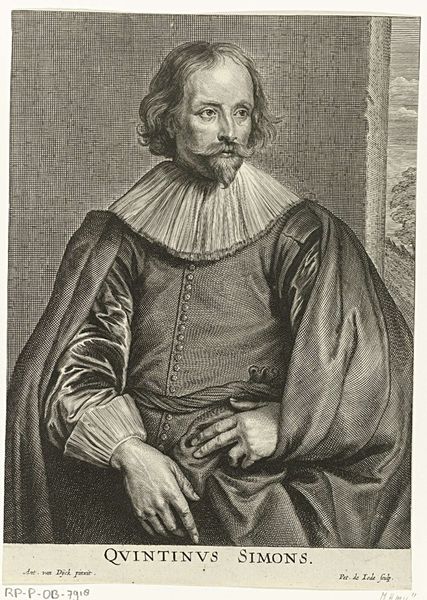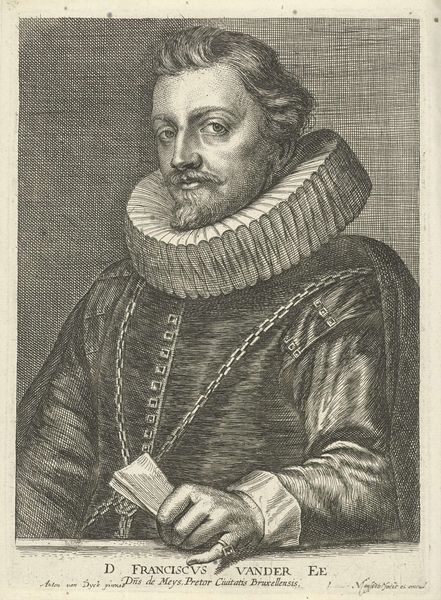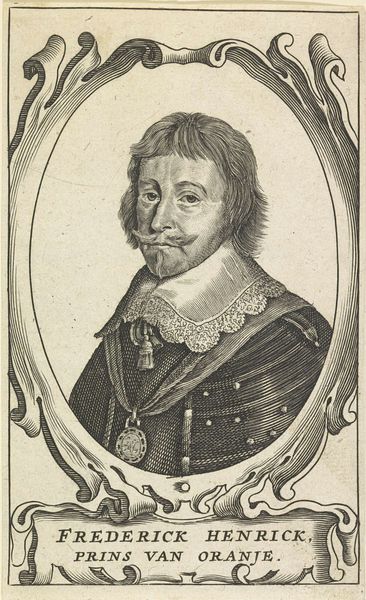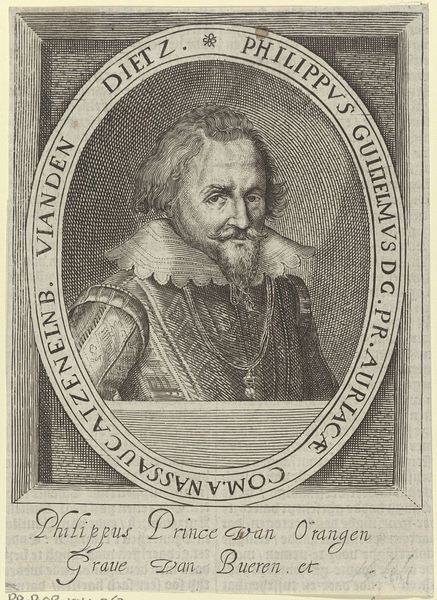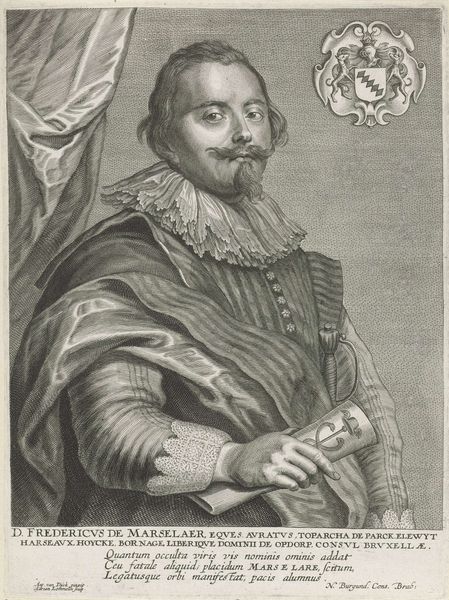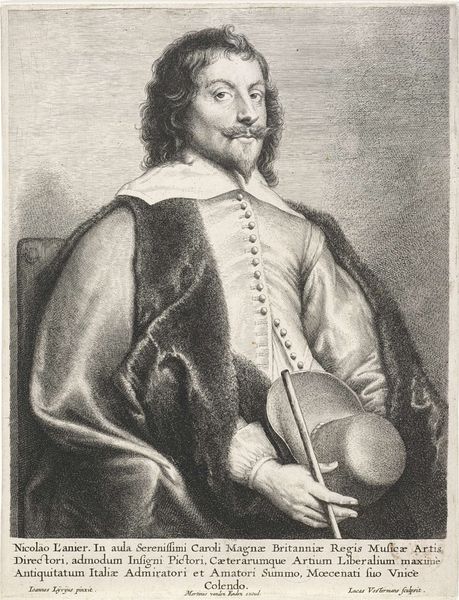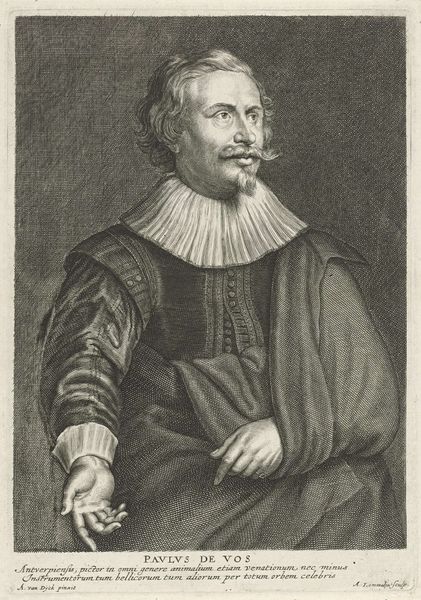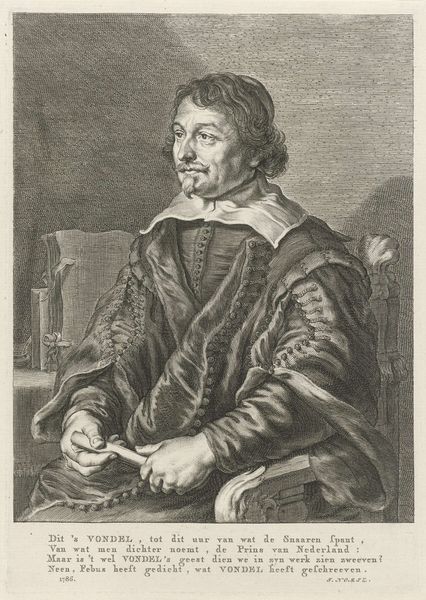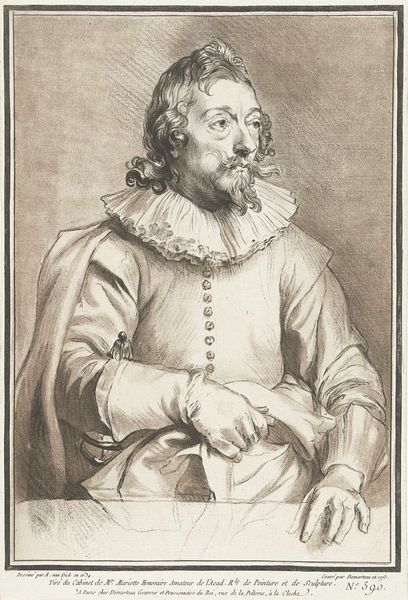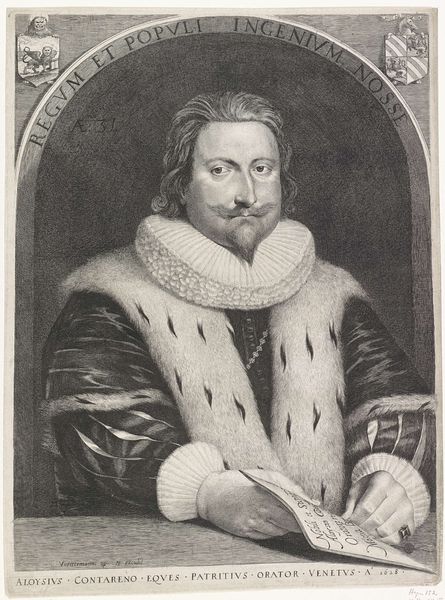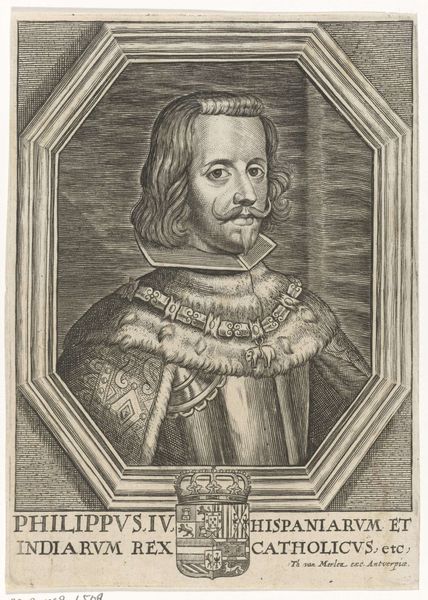
lithograph, print, etching
#
pencil drawn
#
facial expression drawing
#
light pencil work
#
lithograph
# print
#
etching
#
pencil sketch
#
old engraving style
#
charcoal drawing
#
portrait reference
#
pencil drawing
#
portrait drawing
#
pencil work
Dimensions: height 236 mm, width 173 mm
Copyright: Rijks Museum: Open Domain
Curator: Before us, we have a print entitled "Portret van Jacques Callot," made sometime between 1646 and 1675. The piece, now held at the Rijksmuseum, is credited to Lucas Vorsterman I, utilizing etching and lithography techniques. Editor: Immediately, what strikes me is the mood; there’s a real intensity in the subject’s gaze. It feels less like a straightforward portrait and more like a statement of the artist's persona. It is interesting to see a maker portrayed making. Curator: It’s interesting that you say statement, I'd add, considering the broader history. The 17th century witnessed burgeoning print culture, and with that, debates over artistic autonomy and social status were brewing. Editor: Yes, I can see that. How does that cultural milieu manifest in this particular image? Is Callot staking a claim, visually, to something beyond mere craftsmanship? Curator: Absolutely. Note how Callot is not just represented as an artist, but as "IACOBVS CALLOT CALCOGRAPHVS," emphasizing his status. The composition places him at work, yes, but within a carefully constructed image that reinforces nobility—look at the costume, the lace. Editor: Right, the fashion. This feels like strategic self-presentation. I find myself thinking about art-making as gendered labor at this time, as a space where patriarchal assumptions could either be reinforced or subtly undermined by the sitter, the artist, or in our position, the commentator. Curator: That's crucial, especially given that Callot was quite famous in his own time. Vorsterman's piece operates, in part, as a carefully controlled image meant to burnish his reputation, projecting particular kinds of power. The art world as social and cultural construction at its finest. Editor: The piece makes you consider not just Callot, but the machinery of fame and how artists navigate that even then, and in our own time now, particularly where visual messaging reinforces, recreates or upends power dynamics around class and cultural capital. Curator: Indeed. Looking at it from this angle deepens our understanding beyond mere aesthetics. It unveils how even a seemingly simple portrait becomes a contested ground of social positioning. Editor: Exactly. Thank you for shedding new light on my understanding of power, class and position. I may now consider this portrait and so many other forms of artistic practice in this time through the important, vital frameworks of modern intersectional theory.
Comments
No comments
Be the first to comment and join the conversation on the ultimate creative platform.

